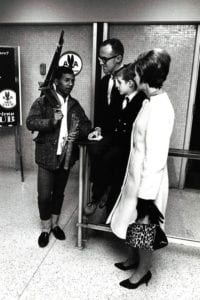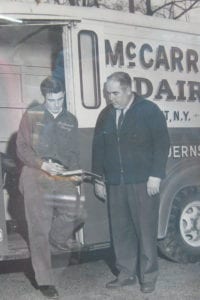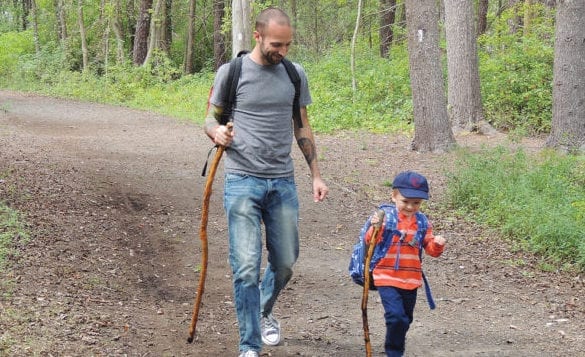With great admiration, many in the area are remembering a jazz music preservationist who recognized the importance of the American-born genre from its early days. Ann Sneed, 87, formerly of Stony Brook and founder of the nonprofit foundation International Art of Jazz, died in Las Vegas, Nevada, April 21, from cancer.
Sneed founded the International Art of Jazz foundation in the 1960s and organized concerts in the Three Village area, as well as surrounding towns. The foundation also traveled to schools to introduce children to the sounds of jazz throughout the state.
When Tom Manuel, trumpet player and owner of The Jazz Loft in Stony Brook, decided to open his venue, he reached out to the music preservationist. He said for years he had heard about her from other musicians, who when they discovered he was from Stony Brook, would ask him if he was familiar with her.

“Ann used to produce these amazing concerts not just in Stony Brook but in the Three Village area, Port Jefferson, at the university,” he said in a telephone interview. “Some of the first jazz concerts at the university were produced by Ann. So, I always heard about her and was always kind of impressed that the oldest organization for jazz in the history of our country was founded right here in Stony Brook. What an amazing accomplishment.”
Manuel said Sneed’s health was failing when they connected, so the majority of their conversations occurred over the phone. The two of them would talk for hours about her life in music and her days running IAJ.
“She was there at the beginning,” he said. “There are so few people you can talk to like that now.”
Manuel described Sneed as spunky, bright, genuine and inspiring. He said he admired her for recognizing the importance of jazz music and preserving it.
“Everything she said was so powerful and so applicable today — that the music was so important, that the artists were so underappreciated,” he said.
Manuel was always in awe of her stories about all the musical artists she met, especially composer, pianist and bandleader Duke Ellington.
“She actually had a fairly well-established friendship with Duke Ellington, and that kind of floored me,” he said. “Not only just the fact that he was a jazz legend but Ellington was arguably one of the greatest American composers of all time, and so much of the jazz standards are Ellington compositions.”
John Broven, music history author, also had the opportunity to meet Sneed when she lived in the Three Village area.
“For many years I knew Ann as the always-friendly ticket collector at Democratic fundraisers, but for a longtime had no idea of her background in classic jazz,” Broven said.
Sneed invited him to her home after she discovered his wife Shelley’s father was the founder of Golden Crest and Shelley Records of Huntington Station.
“It wasn’t until she asked me about three years ago to identify the valuable jazz albums in the large record collection at her Stony Brook home that I became aware of her deep involvement in the music,” he said. “As we browsed through the LPs with the red wine flowing, she brought alive revered artists as real people. She seemed to know them all, including Clark Terry, Marian McPartland, Billy Taylor and a personal favorite, Ruth Brown. Ann was a remarkable pioneering lady in the world of jazz, full of compassion for the musicians, and in a sense paved the way for today’s vibrant Jazz Loft facility in Stony Brook.”
In her autobiography “Miss Rhythm,” rhythm and blues singer Ruth Brown credits her participation in Sneed’s organization International Art of Jazz as being one of the opportunities that helped her get back on her feet after suffering with a career downturn and financial hardships.
“The work that she did, the pioneering work really that she undertook as the executive director of the International Art of Jazz, helped set the stage for the current level of appreciation that jazz has in our society.”
— Steve Englebright
Brown, who lived in Deer Park, wrote in her book how IAJ organized workshops in schools, from kindergarten to college, sometimes two or three times a week to expose children to jazz music.
In addition to her involvement in music, Sneed was also a member of the Suffolk County Democratic Committee, and she was a familiar face at many campaign events for Assemblyman Steve Englebright (D-Setauket) where she was a volunteer manning the front desk.
Englebright said he knew Sneed for 35 years but when it came to her productions he was only able to attend one in the early years of IAJ. However, he said through his conversations with her about jazz and her productions he felt as if he attended all of her events.
“She had the great luminaries of the years when she was there (IAJ) from all over the country and all over the world,” he said. “She was the catalyst really for bringing so many of these people to our shores and to our community on Long Island. I think she lifted the level of our cultural experience rather significantly.”
The assemblyman echoed both Manuel’s and Broven’s sentiments about Sneed’s groundbreaking work as well as her paving the way for jazz appreciation even in present times. “The work that she did, the pioneering work really that she undertook as the executive director of the International Art of Jazz, helped set the stage for the current level of appreciation that jazz has in our society,” Englebright said. “Ann Sneed was well ahead of her time.”
The assemblyman said that it was after Sneed’s work with IAJ that she began to volunteer at his campaign events.
“I was so very privileged and honored that she spent a good deal of her time working to help me in my work with the public,” he said. “Often she was the person who would greet you at the door at the Englebright fundraisers, graciously show you in and make you feel that all was good.”
Matthew Barton, curator at the Library of Congress’ National Audio Visual Conservation Center in Culpeper, Virginia, said recordings of the jazz concerts that Sneed produced are housed in the Library of Congress. The recordings include performances by jazz legends such as Brown, Wynton Marsalis, Illinois Jacquet, Johnny Hartman, Thad Jones and more.
“There are more than 200 of the jazz concerts that Ann Sneed mounted with the International Art of Jazz in the Library of Congress’ recorded sound holdings,” Barton said. “The tapes include a wonderful range of the best performers in jazz over several decades. It’s a wonderful and fitting legacy for someone who loved jazz so much, and did so much for it.”
Sneed is survived by her two daughters Jan Sneed and Kathleen Lukens and two grandsons. Services will be announced at a later date.





















 The letter came after nearly 100 students participated in a
The letter came after nearly 100 students participated in a 





